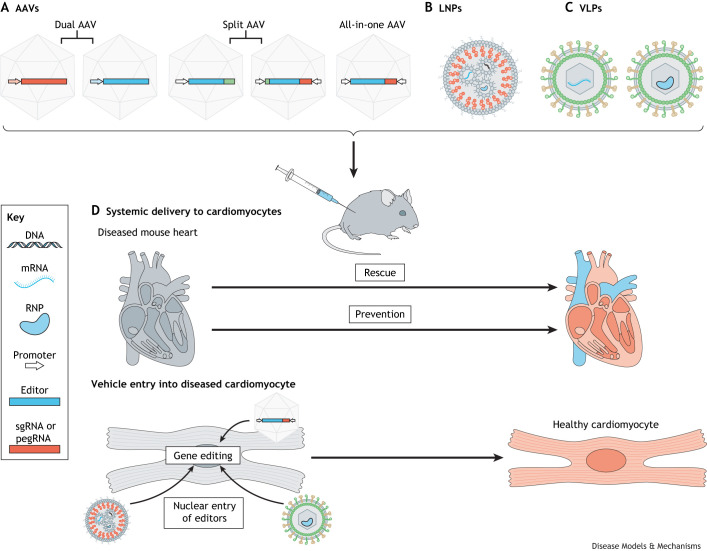Fig. 3.
Schematic presentation of vehicles that can be used to deliver gene editing agents to the heart in vitro and in vivo. (A) AAVs are often used to deliver gene editing agents to the heart in vitro and in vivo. Various strategies have been developed, of which the dual AAVs, the split AAVs and the all-in-one AAVs have been most successful. In dual-AAV strategies, the sgRNA and Cas9 are delivered separately in two distinct viral particles. In split-AAV strategies, gene editors are divided in an N-terminal and C-terminal half in two separate AAVs. Once the cargo is co-transduced in the same cell, recombination can be accomplished at DNA, mRNA or protein level. Non-canonical compacter Cas variants have been developed and used in all-in-one AAV base editing approaches for simultaneous delivery of the sgRNA and editor by the same vector. (B) LNPs are able to deliver gene editing agents as DNA, mRNA or protein. Diverse LNP compositions have been developed containing variable amounts of PEG lipids, cholesterol, structural lipids and ionizable lipids. (C) VLPs have been used to carry editing agents as mRNA and protein to desired tissues in vivo. (D) AAVs, LNPs and VLPs can be intravenously injected to study the result of gene editing in the context of (genetic) heart disease. After release of the cargo to the desired cells, the gene editor machinery will transfer to the nucleus to complete incorporation of the desired edit. AAV, adeno-associated virus; LNP, lipid nanoparticle; pegRNA, prime editing guide RNA; RNP, ribonucleoprotein; sgRNA, single-guide RNA; VLP, virus-like particle.

